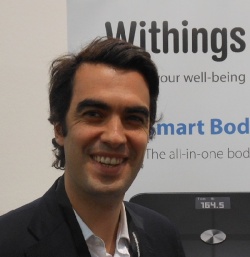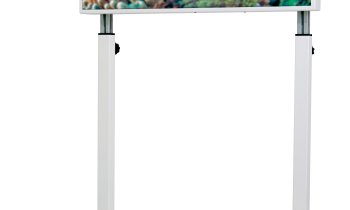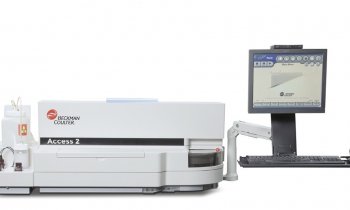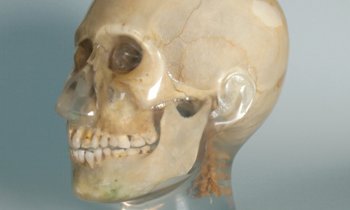Scaling up the power of connected health
Healthcare systems can harness the data generated by smart devices to create more effective preventative health programs.
Today it is not difficult to wire a bathroom weight scale so it can talk to a smartphone. What becomes more interesting is to make sense of what they are saying.

The big data that is now being generated by measures of people's weight, heart rate or blood pressure collected on hundreds of thousands of everyday devices could change healthcare as we know it. Studying this mass of information could even save overburdened healthcare systems, according to Alexis Normand, the business development manager with Withings.
Withings is a pioneer in the fast growing field of connected health, making intelligent objects like blood pressure cuffs, weight scales, a baby monitor or an Activity Trackers that help users by integrating vital statistics of personal health into applications that allow them follow their progress in weight loss, reducing hypertension or managing diabetes. "We were not the first to put Bluetooth in a weight scale, but Withings was the first time to connect the scale with an application and make it a commercial success," said Normand. "We pioneered the field of connected objects a second time by connecting a blood pressure monitor, again, to an application. It only works with the application. But once they are connected you can record your data, send it to your doctor or integrate it with healthcare software.
"We completed an ecosystem of products this year by providing users with a complete picture of their health with the Pulse activity tracker. An eight gram pocket-sized wonder, Pulse is designed to help users meet their personal health and fitness goals by following heart rate and distance covered running or walking, steps climbed calories burned, and even the quality of their sleep.
Normand said Withings is looking beyond these tools to unlock the power of the devices.
Recently the company identified a cohort of 50,000 users of its products to understand how people used the devices and the resulting benefits.
First the identified population was compared to statistical profiles used by health organizations, such as Body Mass Index, to be sure it was representative of the larger population. Then the historical data for body weight was analyzed. "We found that when users set an objective themselves for weight loss, they were likely to lose twice as much weigh as those who did not," he said. "We also asked whether weighing yourself more frequently had an effect and we found those who weigh themselves once a week lose half as much weight as those who weigh themselves once a day. In other word, he said, what would seem intuitive has been validated: the more people follow their personal health indicators, the more they can improve those measures. What is important here is remembering that while this sounds like common, good sense, healthcare systems today are suffering from a burden of chronic disease that results because people do not follow their own good sense.
The future of healthcare as we know it may be revolutionized by using every day devices to measure everyday activity to help people follow good, common sense.
As your doctor will tell you, reducing weight, increasing daily activity and watching your heart can keep you in good health, and can relieve the increasing burden on healthcare systems. "Twenty percent of the population is over 60 years of age, yet they account for up to 80% of healthcare spending," said Normand, adding that by 2020, these senior citizens will make up 30% of the population. To this point the healthcare economy is centered on curing patients who are sick, with drugs and treatment, he said. "The only economically viable model of prevention today is toothpaste, because everyone understands that if they do not brush their teeth they will fall out," said Normand.
"With widespread use of connected devices, we could create a different model, one where there are economic incentives for companies to keep people healthy. There is an increasing mass of data coming now that can allow healthcare administrators to follow in real-time the effectiveness of their programs and policies to reduce chronic disease," he said. "The tipping point that can lead o real change will come when the health insurers, the payers, understand the power of these devices and convince doctors that they should prescribe connected devices and encourage patients to stay informed about their personal health.
21.11.2013











